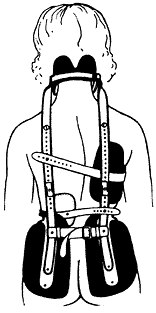Brace Treatment: Scheuermann's Disease
Scoliosis Journal report about brace treatment for patients with Scheuermann`s disease - a review of the literature and first experiences with a new brace design Authors: Hans-Rudolf Weiss, Deborah Turnbull and Silvia Bohr Published: 29 September 2009 Background In contemporary literature few have written in detail on the in-brace correction effects of braces used for the treatment of hyperkyphosis. Bradford et al. found their attempts effective, treating Scheuermann's kyphosis with Milwaukee braces, but their first report did not specifically focus on in-brace corrections. White and Panjabi's research attempted to correct a curvature of > 50 degrees with the help of distraction forces, but consequently led to a reduction in patient comfort in the application of the Milwaukee brace. In Germany they avoid this by utitlising braces to treat hyperkyphosis that use transverse correction forces instead of distraction forces. Further efforts to reduce brace material have resulte

